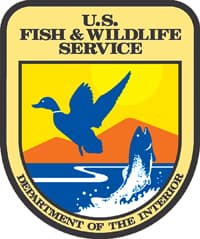Red Wolf Restoration Celebrates 25th Anniversary
OutdoorHub 09.15.12

Today marks the 25th anniversary of the reintroduction of the red wolf. On this day in 1987, the U. S. Fish and Wildlife Service took a giant leap forward in endangered species conservation simply by opening the pen holding a male and female pair of red wolves. Today, about 100 red wolves roam their native habitats in five northeastern North Carolina counties.
The red wolf (Canis rufus) is one of the world’s most endangered wild canids. In 1980, the Service declared red wolves extinct in the wild. Once common throughout the southeastern United States, red wolf populations were decimated by the 1960s due to intensive predator control programs and loss of habitat. A remnant population of red wolves was found along the Gulf Coast of Texas and Louisiana. After the red wolf was declared an endangered species in 1967, efforts were initiated to locate and capture as many wild red wolves as possible. Of the 17 remaining wolves captured by biologists,
14 became the founders of a successful captive breeding program.
The first litter of red wolves born in captivity occurred in 1977. By 1987, enough red wolves were bred in captivity to begin a restoration program on Alligator River National Wildlife Refuge in northeastern North Carolina.
Since then, the experimental population area has expanded to include three national wildlife refuges, a Department of Defense bombing range, state-owned lands, and private property, spanning a total of 1.7 million acres.
In addition to the wild population, approximately 200 comprise the Species Survival Plan captive breeding program in sites across the United States, still an essential element of red wolf recovery. Interbreeding with the coyote (Canis latrans), a species not native to North Carolina, has been recognized as a significant and detrimental threat affecting restoration of red wolves in this section of their historical home range. Currently, adaptive management efforts are making good progress in reducing the threat of coyotes while building the wild red wolf population in northeastern North Carolina.
To learn more about red wolves and the Service’s efforts to recover them, please visit www.fws.gov/redwolf.

